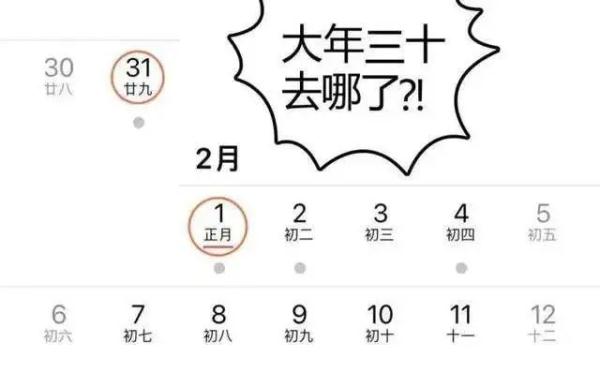It is no exaggeration to say that,
A minute or two apart,
You can decide whether New Year’s Eve is "30" or "29".

New Year’s Eve is also called "Thirty Years".
However, why is the upcoming New Year’s Eve not "30"?
But "29 years old"? What is the scientific basis for determining the number of days per month in the lunar calendar?
Minister of Network Science Department of Shanghai Planetarium,
Shi Kun, Deputy Secretary-General of Shanghai Astronomical Society, made a popular science interpretation for the public.
According to reports, calendars adopted by various countries and nationalities today can be divided into three categories-solar calendar, lunar calendar and combined calendar of yin and yang. The Gregorian calendar is based on the "tropic year", that is, the period of revolution of the earth. The most widely used solar calendar is the Gregorian calendar, which has a calendar year of 365 days in a normal year and 366 days in a leap year, with an average of 365.2422 days in a year. The lunar calendar is a calendar based on the "Shuowangyue", that is, the change period of the moon phase. This kind of calendar does not take into account the factors of the earth’s revolution, and accumulates in a "new moon", with 354 or 355 days in a year.
The combined calendar of yin and yang is a calendar that takes into account the two periods of "the year of the tropic of cancer" and "the first moon". Following the previous cycle is to reflect the timely change of seasons and guide agriculture, fisheries and animal husbandry; Following the latter cycle is to reflect the moon phase, facilitate the marking of the sun and the time, and guide agriculture, fisheries and animal husbandry. Coastal areas along the Yangtze River can also associate it with tides.

The lunar calendar is a combined calendar of yin and yang, and the number of days in the month is determined according to the change cycle of the moon phase. The new moon is the new moon, and the full moon is the hope. A "full moon" has an average of 29.5306 days, so the number of days in the lunar month is 30 days or 29 days. 30 days are commonly called "big moon" and 29 days are called "small moon". The arrangement of the big moon and the small moon is not arranged at intervals, but is completely determined by the moon phase. According to the lunar calendar, the first day of each month is the first day, which is determined by the time when the new moon appears. This principle is called "the method of determining the new moon".
A new moon that just passed happened at 2: 33 on January 3, 2022, so January 3 was determined as the first day of the twelfth lunar month. The next new moon will occur at 13: 46 on February 1, 2022, so February 1 is determined as the first day of the first lunar month. In this way, this December of the lunar calendar has only 29 days, so there is no "New Year’s Eve".
The last time New Year’s Eve was "29 years old", it happened on February 7, 2016. The next "New Year’s Eve" will appear on January 28th, 2025. From 2025 to 2029, "New Year’s Eve" will be absent for five consecutive years. Are there any rules? "It is generally regular, but it seems that the regularity is not very strong locally." Shi Kun explained that this is because the moon, a satellite, is not very small compared with the earth, so it will keep swinging when it revolves around the earth, as if the earth and the moon are dancing a complicated Waltz. "Imagine the extreme situation: if the new moon occurs at 23: 59, the number of days in the lunar calendar will be one day less; If the new moon happens at 0: 01, there will be one more day. It is no exaggeration to say that a difference of one or two minutes can determine whether New Year’s Eve is’ 30′ or’ 29′. "

In addition to determining the number of days per month according to the moon phase, the lunar calendar also sets up 24 solar terms according to the law of the earth’s revolution around the sun, which is also the basis for the lunar calendar to set leap. The purpose of setting leap is to combine the running laws of the moon and the sun to "coordinate Yin and Yang". If the lunar calendar is an accumulation of 12 "moons" in a year, there are only 354.36 days in a year, which is 10.88 days less than the "tropic year", so the lunar calendar adopts the method of setting seven leap months in 19 years to "catch up with the Gregorian calendar", so that the difference between the Gregorian calendar and the lunar calendar is only 0.0518 days every 19 years. It can be seen that the lunar calendar is a very scientific calendar of yin and yang.
From: Xinhua News Agency
Source: Chongqing Daily
关于作者